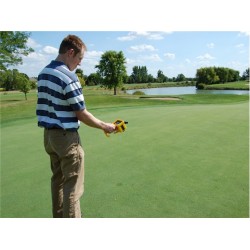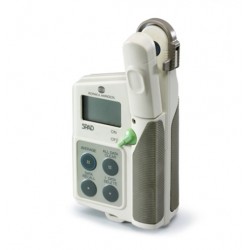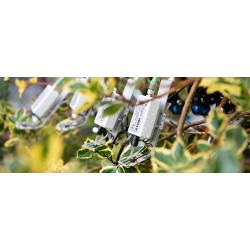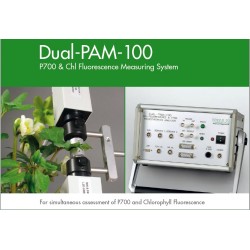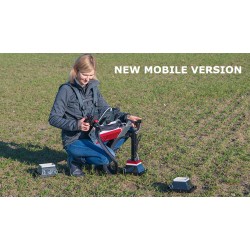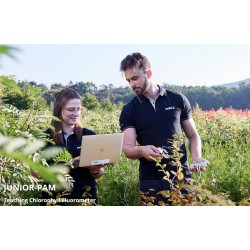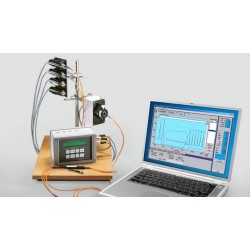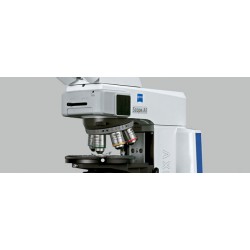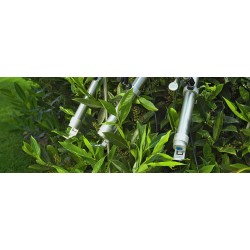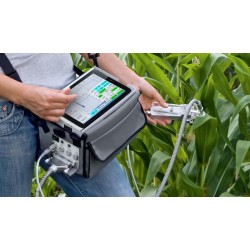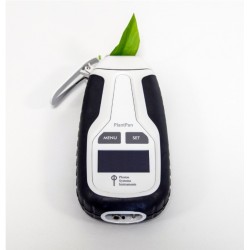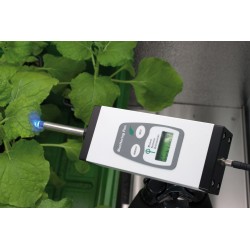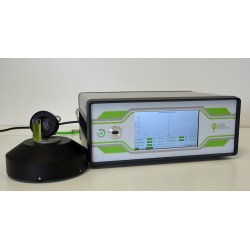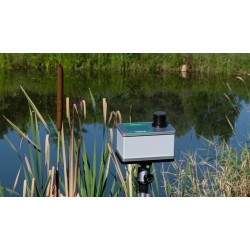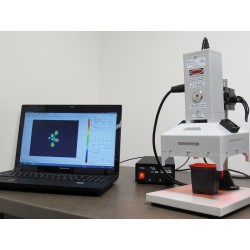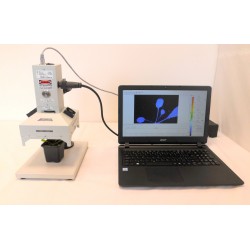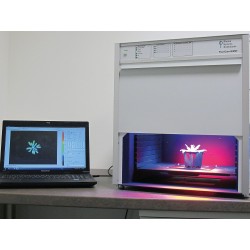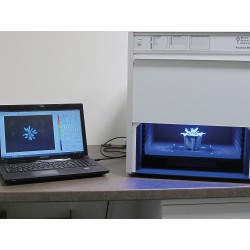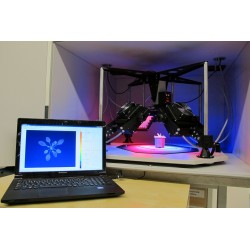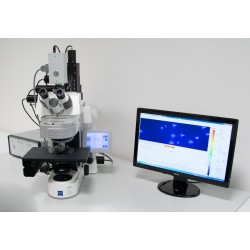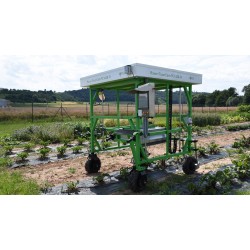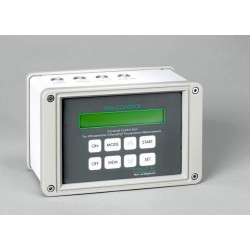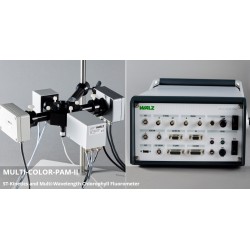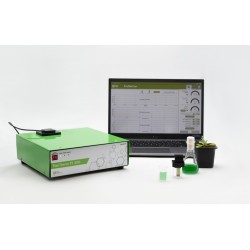Sem produtos
Preços sem IVA
Produto adicionado com sucesso ao seu carrinho de compras
Existem 0 produtos no seu carrinho de compras. Existe um produto no seu carrinho de compras.
Walz LSA-2050 Analisador de estado de Folha
LSA-2050
New
Propriedades notáveis:
◆ Mede proteção contra a radiação UV-B particularmente prejudicial
◆ Triagem de sondas em quatro bandas de onda: UV-B, UV-A, azul e verde
◆ Fornece os fatores de estresse conteúdo de clorofila e danos ao fotossistema II
- Consulta este producto
- Retirar este produto da minha lista de favoritos.
- Adicionar este produto à minha lista de favoritos.
| O Sensor mede: | Clorofila |
► O Analisador de status de Folha LSA-2050 é um dispositivo portátil para análise foliar não invasiva.
► O aparelho analisa três áreas relacionadas ao estado de saúde da planta:
1 - a extensão da proteção contra radiação ultravioleta e forte radiação visível
2 - a concentração de clorofila
3 - o rendimento quântico fotoquímico máximo do fotossistema II, FV/FM.
► Em resumo, o LEAF-STATE-ANALYZER LSA-2050 fornece uma imagem dos efeitos do estresse e da capacidade de uma planta de lidar com o estresse.
O LEAF-STATE-ANALYZER LSA-2050 mede a triagem de radiação pela eficiência da excitação de fluorescência. Ele usa quatro bandas de ondas de excitação diferentes que podem ser atribuídas a quatro grupos de pigmentos: UV-B e UV-A para ácidos hidroxicinâmicos e flavonóides, respectivamente [1], azul para carotenóides [2] e verde para antocianinas [3].
São fornecidos valores de absorvância indicando a concentração relativa de flavonóides e antocianinas.
A concentração de clorofila é medida pelo método Cerovic [4]. O método se destaca pela alta resposta mesmo em altas concentrações de clorofila. O fotossistema II é analisado pelo comprovado método de pulso de fluorescência/saturação PAM [5]. Com cada medição, são registrados dados de GPS, orientação das folhas e direção da radiação solar.
[1] Bilger W, Veit M, Schreiber L, Schreiber U (1997) Medição da transmissão epidérmica foliar da radiação UV por fluorescência da clorofila. Planta Fisiol 101: 754–763
[2] Nichelmann L, Schulze M, Herppich WB, Bilger W (2016) Um indicador simples para estimativa não destrutiva do conteúdo de pigmento do ciclo da violaxantina nas folhas. Fotossintetizador Res 128: 183-193
[3] Cerovic ZG, Moise N, Agati G, Latouche G, Ben Ghozlen N, Meyer S (2008) Novos sensores ópticos portáteis para a avaliação da maturidade fenólica da uva para vinho com base na fluorescência da baga. J Food Compos Anal 21: 650-654
[4] Cerovic ZG, Masdoumier G, Ben Ghozlen N, Latouche G (2012) Um novo medidor óptico de corte de folhas para avaliação simultânea não destrutiva da clorofila foliar e flavonóides epidérmicos. Planta Fisiol 146: 251–260
[5] Schreiber U, Schliwa U, Bilger W (1986) Registro contínuo de extinção de fluorescência de clorofila fotoquímica e não fotoquímica com um novo tipo de fluorômetro de modulação. Fotossintetizador Res 10: 51-62
Diseño General:
Housing: Battery-powered handheld device consisting of a control unit and a sample clip, both made of painted polyamide 12 (PA 12). The control unit is equipped with a holder for four AAA-type batteries and a USB-C connector. Two metal flat springs press the clip jaws together. The lower clip jaw is removable.
Display: Backlit transflective B/W LCD display, 48 x 27 mm, 128 x 64 pixel
Control: Six control keys plus a separate START key to start a measurement
Data memory: Flash memory, 8 MB, providing memory for more than 30,000 data sets
Data transfer: USB-C port
Power supply: 4 AAA (Micro) rechargeable batteries (eneloop 1.2 V/2 Ah); 4 spare batteries, automatic power/off, battery charger (100 to 240 V AC, 50-60 Hz) for 4 batteries
Operating temperature: -5 to +45 °C, non-condensing
Dimensions: maximum 26.5 cm x 7.0 cm x 3.5 cm (L x W x H)
Weight: 240 g (without batteries)
Measuring Modules
Viewing area: Disk with 10 mm diameter
Upper clip jaw: Five LEDs are circularly arranged around a PIN photodiode, which is shielded from LED emission by a long-pass filter. A quartz glass disk closes the LED/photodiode compartment. Measuring light consists of 10 µs pulses given at 15 Hz except for FM determinations (100 Hz). Typical maximum emission wavelength, full width at half maximum (FWHM), and integrated intensity at 15 Hz are: UV-B, 310 nm, 15 nm, 0.1 µmol m‑2 s‑1 (0.05 W m‑2). UV-A, 365 nm, 12 nm, 0.3 µmol m‑2 s‑1 (0.1 W m‑2). Blue, 450 nm, 14 nm, 0.1 µmol m‑2 s‑1. Green, 530 nm, 27 nm, 0.1 µmol m‑2 s‑1. Red, 630 nm, 24 nm, 0.1 µmol m‑2 s‑1. The UV LEDs are only activated in the presence of a fluorescing sample
Lower clip jaw: A far red LED (peak wavelength 715 nm, FWHM 25 nm) and a near infrared LED (peak wavelength 770 nm, FWHM 30 nm) are positioned in the center of the viewing are. The LEDs are covered by a light-diffusing disk and a quartz disk
Geospatial Data: A GPS receiver, plus accelerometer, gyro- and magneto-scope sensors add geospatial information to each measurement, including the angle at which sunlight impinges on the leaf
Battery Charger
Design: Four position intelligent charger for AA or AAA Nickel Metal Hydride (NiMH) or Nickel Cadmium (NiCd) batteries
Carrying Case LSA-2050/T
Design: Padded plastic case with handle
Dimensions: 36.0 cm x 30.5 cm x 8.0 cm (L x W x H)
Weight: 920 g
Accesorio:
Darkening Bags LSA-2050/DB
General Design: Set of three small, three medium and three large light-tight bags for dark acclimation of leaves of different sizes made of aluminum foil, colored on the outside. Each bag has a 2 cm diameter central hole for non-invasive determination of chlorophyll concentration with the LSA-2050. During dark acclimation, both sides of the hole are covered by metallized PET plastic flaps. The flaps magnetically attract each other which ensures that both lie tightly on the surface of the bag. The flaps are flexibly attached to the darkening bag at one end. The other, loose end is folded slightly outwards so that the sample clip of the LSA-2050 can be guided to the hole by folding open the flaps
Dimensions: 100 mm x 70 mm, 150 mm x 100 mm, 180 mm x 120 mm (small, medium, and large size, respectively)
Weight: 3 g, 4 g, 5 g (small, medium, and large size, respectively)

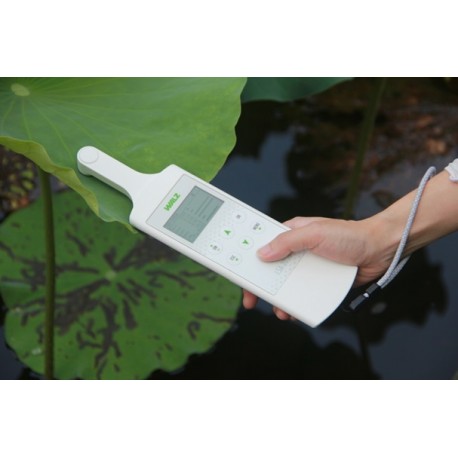















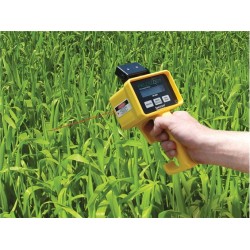
![MC-100 Medidor de Concentração de Clorofila [µmol m-2] com GPS interno](https://www.alphaomega-electronics.com/18349-home_default/mc-100-medidor-de-concentracao-de-clorofila-mol-m-2-com-gps-interno.jpg)
